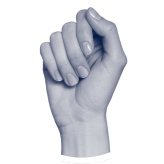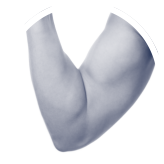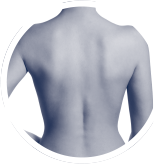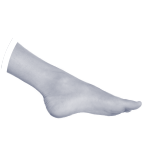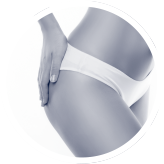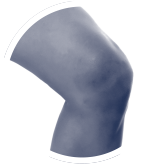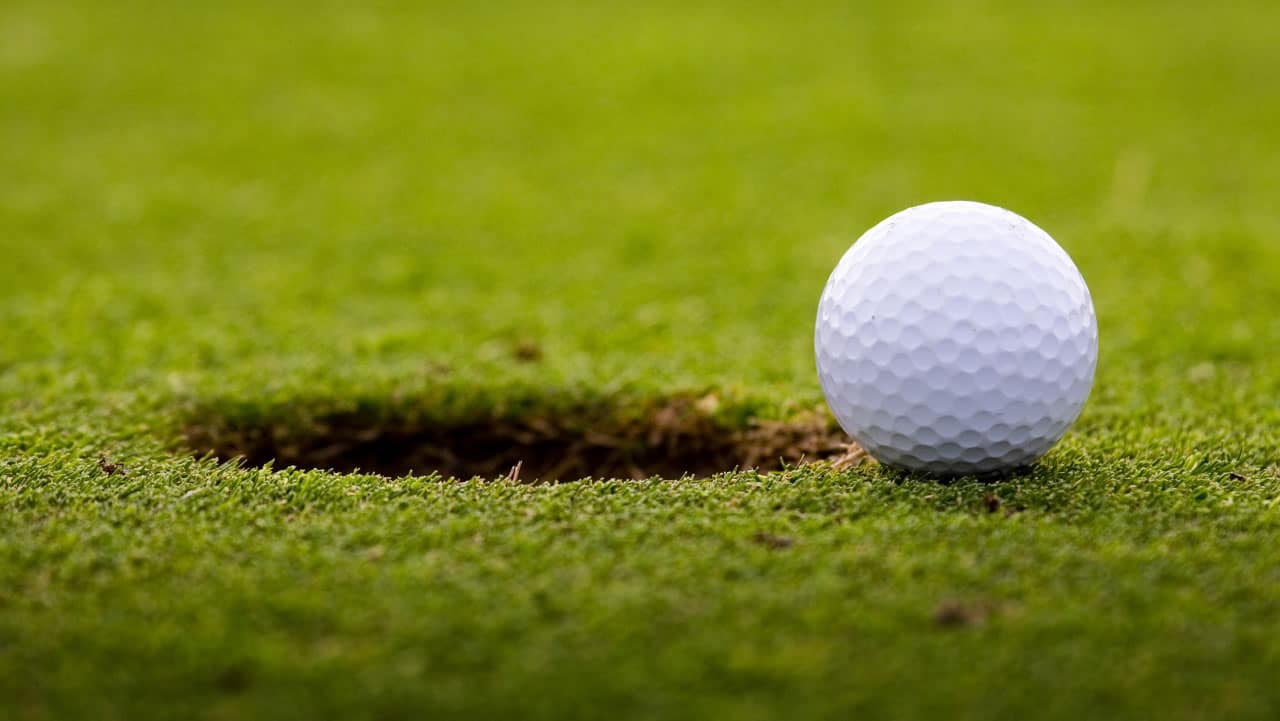
As the golfing season comes into full swing, it’s worth finding out about common golfing injuries and steps you can take to try and prevent them, leaving you to enjoy your golfing game to the full.
If you are an avid golf player, it’s highly likely that you have suffered some pain or discomfort from it at some point. While it’s not a high-impact sport, it does require some complex movements which can put a great deal of strain on the upper part of your body – particularly your lower back and shoulders. Elbows and wrists, typically get injured in golf too.
The good news is that most golfing injuries can be treated non-surgically – but an early diagnosis is key to ensuring an effective, minimally invasive treatment.
What Causes Golf Injuries?
Any repetitive action can result in musculoskeletal injuries over time. This is a particular problem if you are not used to warming up, stretching, or building muscle to counteract overuse injuries.
Very few non-professionals get regular instruction to help correct their form and swing.
Age also plays a significant part too; many recreational golfers are over the age of 40, and therefore the likelihood of injuries that need medical attention tends to be higher.
The forceful rotation and impact of swinging a golf club can also lead to sprained wrists, elbow injuries and traumatic injuries – for example, if there is sudden resistance from sand in a bunker or you hit a tree root. Tendons, ligaments, nerves, and other soft tissue in your joints can get damaged.
Modern techniques of creating greater power in the golf swing involve keeping the hips more static, rather than keeping them more aligned with the shoulders. This type of stance increases the rotational force in the lower back and shoulders, creating a greater chance of injury.
What are the Most Common Types of Golfer’s Injuries?
Back Pain
Injuries to the spine and lower back are the most common among amateur golfers.
You probably won’t be surprised to learn that improper swing technique is one of the chief causes of lower back pain among golfers. The one-sided, forceful rotational action of a golf swing puts great strain on your lower back. If your swing is too rough or forceful, it can not only lead to muscle strains but also put considerable pressure on the spine’s ligaments and discs. When you consider that spinal mobility decreases as we get older, it’s little wonder that lower back pain is a particularly common injury among senior golfers.
Common causes of lower back pain in golfers include:
- Muscle strain or ligament sprain: the muscle ligaments of your back are stretched, leading to pain, inflammation, and muscle spasms.
- Disc injuries: If you have any damage to the discs that separate the vertebrae of your spine. The repetitive motion of a golf swing is likely to exacerbate the condition.
- Arthritis: Degeneration (wear and tear) of cartilage and bone in the joints of your lower back can be worsened by repetitive actions in golf, leading to symptoms of pain and stiffness.
- Fractures: Stress fractures of the bones in your spine can also occur because of repeated rotational movements, leading to dull pain and a feeling of instability.
Many lumbar back conditions can be resolved quickly and easily with rest and physiotherapy, but if left untreated, can lead to more serious conditions. It is therefore vital that you seek expert help if you have ongoing back symptoms.
Shoulder Pain
The golf swing is a surprisingly complex and powerful rotational movement – and the shoulders take the brunt of the effort.
While many shoulder conditions have similar symptoms – pain, inflammation, and weakness – it is really important to get the correct diagnosis by a shoulder specialist in order to treat your shoulder pain effectively.
Common shoulder conditions in golfers include:
- Shoulder Impingement: Inflammation and impingement of the Rotator Cuff tendons – the main tendons in the shoulder that attach your muscles to the bones, and that support and mobilise your shoulder joint.
- Acromioclavicular Joint Pain: Caused by an injury to the joint at the top of your shoulder where your collar bone meets your shoulder.
- Rotator Cuff tears: The group of muscles and tendons that surround the shoulder joint can get stretched or damaged by the repetitive movement of a golf swing.
- Labrum (SLAP) Tear: the ring of cartilage that surrounds the socket of the shoulder joint can get torn as a result of the over-rotation of a golf swing.
- Arthritis: Overuse of any joint can cause wear and tear of the smooth cartilage coating the bones. The exposed rough bone surfaces cause friction in the joint and can eventually lead to the formation of bone spurs, misalignment, and soft tissue damage in your shoulder.
- Instability: Any significant soft tissue or bony injury can cause the bones of the shoulder joint to subluxate or dislocate.
Elbow Pain
The tendons that attach your forearm muscles to the elbow joint can get stretched, pinched, or torn as a result of overuse. The elbow tendons can be stressed by the way you hold your club (with an overly bent elbow or wrist, for example), or simply through overuse. Elbow tendons can also be damaged by the club striking the ground or a solid object.
Common injuries include:
- Golfers Elbow (medial epicondylitis): Pain on the bony bump on the inside of your elbow joint. It can lead to weakness and stiffness in the joint if left untreated.
- Tennis Elbow (lateral epicondylitis): Pain and inflammation of the tendon and bony bump on the outside of the elbow. This painful condition is as common in golfers as golfer’s elbow.
Wrist injuries
The structures of your wrist are particularly at risk of injury if you over-bend or over-extend your wrist at the point of impact. Many wrist problems are simply the result of overuse, not warming up properly or failing to build up the forearm muscles.
Common injuries include:
- Sprain: A wrist sprain usually occurs when your golf club hits something hard such as the ground, the bunker sand, or a tree root. The stretched or torn ligaments can result in pain, swelling, bruising and instability.
- Tendonitis: The tendons, which attach your muscles to the bones of your wrist, can get swollen and inflamed due to overuse.
- Carpal Tunnel Syndrome: The nerves that run through your wrist bones (carpal tunnel) can get pinched as a result of swelling or structural damage in the joint. It leads to numbness and weakness in your hand and fingers.
While many shoulder, elbow and wrist conditions have similar symptoms – pain, inflammation, and weakness – it is really important to get the correct diagnosis by a shoulder specialist in order to treat your shoulder pain effectively.
At London Bridge Orthopaedics we have several upper limb specialists.
Tips to Help Prevent Golf Injuries
Warming up before a round increases the blood flow to your muscles and loosens them, making them less susceptible to tears. It also improves your flexibility, meaning your range of motion is less restricted during the swing.
Cooling down is equally important. It allows you to clear out the lactic acid that’s built up in your system while you’ve been playing, which is important as lactic acid build-up can result in muscular pain and fatigue. It also reduces Delayed Onset Muscle Soreness (DOMS), which can significantly reduce your range of motion and cause severe stiffness.
Practice good swing mechanics.
Your entire body is used when you swing your golf club, understanding the mechanics behind your golf swing can help you prevent golf injuries.
- Stay smooth. The power of a golf swing comes from force transferred smoothly through all the muscle groups, from your ankles to your wrists. If you depend on one part of your body for your hitting power, you may be more likely to have injuries. For example, overemphasizing your wrists during your swing can lead to golfer’s elbow — a strain of the muscles on the inside of the forearm.
- Don’t overswing. If you swing the club too hard or too fast, you may stress your joints. Relax and take a nice, easy swing at the ball. The best golfers have consistent — not necessarily fast — swing tempos.
- Use proper posture. It’s important that you maintain the correct posture while swinging your clubs and putting the ball. Stand with your feet shoulder-width apart and rotated slightly outward, and with your knees slightly bent. Your trunk should be tilted forward, but most of that movement should come from your hips. Avoid hunching over the ball, which may lead to neck and back strain.
If you want to reduce the risk of golf injuries, consider taking lessons. What you learn about your golf swing may even help you shave strokes off your score. It may also help you prevent injury.
Build up your Golf Fitness and Endurance
Strong muscles will improve your club speed, prevent them from wearing down during long games and causing pain, and they are less prone to injury. It’s advisable to do strengthening exercises all year-round.
Regular stretching can improve your flexibility and range of motion and can help with a more fluid golf swing.
Think about how you carry and lift your clubs
Golfers who carry their own bags have higher rates of shoulder and back injuries than do other golfers. If you jerk heavy clubs out of the trunk of your car, you could injure yourself before you reach the first tee. Use proper lifting technique by using the strength of your legs to lift.
If you have back or shoulder pain already, you may consider asking someone else to carry your bags and using a golf cart.
How Can Golf Injuries Be Treated?
If you have any pain in your back, neck, elbows, shoulders or any other part of your body, get in touch with our expert team of consultants at London Bridge Orthopaedics today.
Your consultant will discuss all treatment options available; from physiotherapy to surgery. The right treatment for you will depend on many factors including your age and functional requirements.
The most important thing is that you get an accurate diagnosis from an orthopaedic specialist. At London Bridge Orthopaedics, our internationally renowned consultants have many years of experience in all fields of orthopaedics conditions and have access to the latest technology and diagnostic tests.
We are able to offer fast appointments, rapid diagnosis and the latest evidence-based treatments; our goal is to ensure you receive the right treatment the first time and an excellent clinical outcome.


